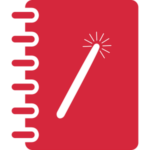- Last updated
- October 30, 2025
This topic evolves rapidly.
Artificial Intelligence (AI) is when a machine appears to perform the cognitive functions we usually associate with human minds. The type of AI that people are most interested in lately is “generative AI”. These are tools that create new original content at our request, from natural language (prompts) we provide.
There are a number of areas in which education may see long term benefits when using AI-enhanced approaches to existing priorities. Supporting students with disabilities, addressing variability in student learning, enabling English language learners in the traditional classroom, or adaptive feedback loops that increase the quality and quantity of feedback provided to students and teachers are a few examples.
AI will never replace good teachers. Educators have the opportunity to use AI-enabled tools to amplify their role in the learning process, enabling them to engage and support their students at even higher levels. It can also help reduce the burden of “off-stage” activities like grading, analyzing data, crafting professional communications, and more.
These days there is a lot of AI hype out there, with companies pushing “magical thinking machines” and overpromising time savings and results. Every month our existing tools update with more AI enabled features, whether we ask for them or not.
At LPS, we want to take a measured and responsible approach to the integration of AI tools into our work. Any tool used by LPS staff must meet our requirements for security, data governance, manageability and integration with our current workflows.
We’ll be doing controlled deployments of these tools over time and you can choose to use them if you think they’ll help you with your work. Please share your feedback on the ways they positively impact your work, and what might make them more useful for you.

This topic evolves rapidly.
Generative AI (GenAI) – the class of tools that can be used to create new material (novel synthetic content), including audio, code, images, text, simulations, and videos.
Large Language Models (LLM) – a type of AI that has been trained on vast amounts of text to understand existing content, find patterns, and generate original content in response to human prompts.
Prompt – The method of interacting with an AI tool in the form of a request, or question. Usually text based, and conversational in nature.
 Google’s Gemini Chat is a generative AI tool available for use by LPS staff members. (It is not provided to LPS students at this time.) It exists within our LPS Google domain, and you should access it via your @class.lps.org Google account.
Google’s Gemini Chat is a generative AI tool available for use by LPS staff members. (It is not provided to LPS students at this time.) It exists within our LPS Google domain, and you should access it via your @class.lps.org Google account.
Please consider all LPS guidance and policy (found elsewhere on this page) around the use of Artificial Intelligence before using Gemini.
Why Gemini? Unlike other generative AI tools available on the internet, the Gemini’s tools exist within the legally protected environment of our LPS Google domain (@class.lps.org). Prompts and responses generated here are covered by the same privacy guarantees as Gmail, Drive, Docs, and the other Google Workspace tools used by LPS, in compliance with FERPA, and BoE Policy on data privacy. It is important to understand that these privacy practices are NOT in place when using Gemini within a personal Google account.
If you are interested in how to use Gemini, you might begin with this short course from Google where you can learn about the concepts, identify ways it might assist your professional practice, and explore the process of writing education specific prompts.
 Gemini’s Gems feature offers prompt templates that can be customized to meet your needs, then saved for re-use. They are a big time saver for tasks you may perform repeatedly. You can connect them to helpful support materials, or draft long prescribed prompts that tell Gemini everything you want it to know for a better reply.
Gemini’s Gems feature offers prompt templates that can be customized to meet your needs, then saved for re-use. They are a big time saver for tasks you may perform repeatedly. You can connect them to helpful support materials, or draft long prescribed prompts that tell Gemini everything you want it to know for a better reply.
Learn how to get started with Gems.

Gemini’s Canvas feature allows you to create and collaborate with Gemini in one interactive workspace. Your prompts appear in the left column, and an editable canvas appears in the right column so that you can rapidly evolve your thinking around pieces of text or code in real time, visually.
Learn how to get started with Canvas.
 Image Creation
Image CreationWhile using Gemini Chat, you can now ask it to create images. These images can then be used in your materials. Another pathway to creative images is the Whisk app, a “creative experiment” in Google’s AI Labs.
Please note that these images are novel. You may find that they are more “creative” and less “informative”. Be careful to carefully preview any generated media before using it elsewhere.
Learn more about image creation in Gemini.
 Deep Research
Deep ResearchWithin the Gemini app is a Deep Research feature that can bring you up to speed on just about any topic by browsing hundreds of websites on your behalf, analyzing what it finds, and presenting you with a personalized research report.
That’s great, but remember to evaluate it carefully and know that if you share it, you are taking ownership of its accuracy. In our experience it may pass along the bias of the source materials, and people with actual expertise on the topic may find reasons to disagree with its conclusions. It does provide valuable background information and a great start towards understanding.
Learn how to get started with the Deep Research feature.
The NotebookLM application is also enabled for your LPS Google account. It is a tool that uses the Gemini AI engine to better understand and work with your own documents (Google Docs & Slides, PDFs, text files, YouTube videos, web URLs, and more.)
Here are a few initial ideas for use cases:
As we commonly see with generative AI tools, NotebookLM is not immune to making false statements, so continue being a careful consumer of the content within these tools.
As a “Core Service” of Google Workspace it includes the same data protections as all of our Google Drive, Docs, and Gmail files.
Learn more by visiting Google’s NotebookLM resource page.

Get a feel for Notebooks by exploring some public notebooks created by others:
Learn more about NotebookLM by visiting Google’s NotebookLM resource page.
Generative AI can’t “think” for itself. The AI tools are really just math, not magic. To better understand how it works, we need to learn about the language gen AI uses (tokens), and how the algorithms create novel text based on our prompts.
As technology evolves and becomes more sophisticated, it’s understandable that we’re uneasy about actual and anticipated challenges. Here are some thoughts and strategies to consider as we all move forward.
Lilach Mollick explains it well: AI is UBIQUITOUS, UNDETECTABLE, and TRANSFORMATIVE.
Ubiquitous – AI is everywhere. Every person has access to it. There is no way to filter or block students from access. It is already found within everyday tools, and increasingly so. Even if it were possible to block AI from LPS devices (which it is not) students would be still able to access it from home devices and/or their phones.
Undetectable – Students are already using it in all kinds of ways. This includes cheating, and we can’t tell if they’re doing so. Common AI “detectors” have high false positive rates, are easily fooled, and may contain implicit bias.
Transformative – AI is our first technology since the creation of the Internet that touches everything we do. It has the potential to transform how we live, how we work, and how we teach.

Many Federal Regulations are relevant to the use of AI in an educational setting. Teachers and staff should be mindful of this, and adhere to these commitments we have to students and families before using an AI tool in our work, or with students.
FERPA – Any AI systems used by LPS employees must protect the privacy of student education records. Most publically available AI tools do not have the level of security and privacy policy in place to assure that student data remains protected. If LPS staff choose to use AI in support of their role and practices, they should ensure that no personally identifiable information is ever included in AI prompts.
COPPA – Like all websites that require a login or collect personal information, AI tools require parental consent when used with students under the age of 13. Tools that are approved for use in LPS have gained this consent. Check the Matrix to see if a tool is approved for use with students.
IDEA – AI must not be used in a way that denies disabled students equal access to education opportunities.
CIPA – Schools must ensure that AI use aligns with CIPA protections against harmful content.
Section 504 (of the Rehabilitation Act of 1973) applies to both physical and digital environments. Schools must ensure that their digital content and technologies are accessible to students with disabilities.
At this time students DO NOT have access to Gemini tools in their LPS accounts, nor on LPS Chromebooks. Teachers should not assign any work that requires the use of generative AI at this time. However, teachers should assume that enterprising students have ways to access generative AI tools outside of LPS when completing assignments. Please follow existing Board Policy and Student Code of Conduct expectations around academic integrity.
Guided Browsing and Freeze Tabs
Hāpara is a critical component of our systems for managing behaviors in the classroom. It offers some powerful features that teachers can use to focus student browsing activity while keeping them from accessing unintended resources during LPS classroom work time. (NOTE: This does not stop a student from accessing tools from their personal cell phones).
You can use the built-in Originality Reports in Google Classroom when creating assignments. Our LPS license includes unlimited reports for our staff. These reports do not detect AI generated text, but may help students understand that you are conscious of the potential for academic dishonesty.
If you are a teacher of science, history, social studies, or any other area that depends upon facts, the most appropriate way to address AI generated text may be to start an assignment by using AI generated text!
Start with an assignment or prompt about your subject that you would otherwise have assigned to your students. Instead, take that to Gemini, ChatGPT, or another generative text tool. Have it generate a version or two of a response.
For your assignment, have students respond to the text you generated. Show them how you got the text. Have the students evaluate the response. Fact check it, cite their sources. Evaluate it for potential bias. Ask them to add one thing they learned about the topic that the AI missed. Have them argue an alternative viewpoint. This is the sort of high level thinking you may have been hoping for when assigning the prompt originally.
Getting an up close look at the hallucinations and errors that can appear in generated text may be the best way to make students wary of using it in a copy/paste fashion. At the very least it will model an appropriate way to approach AI generated text in their future endeavors.

If the work was done in a Google Doc, Sheet, or Slide document, check the version history. As an editor, you should be able to see the progression of the text in the document from word-to-word, and any editing that happens along the way. If the text suddenly appears all at once in the history of the document, it may be a clue that it was pasted from another source.
Consider assigning work that requires students to iterate on an assignment (edit, revise, remix.) These built-in steps might make it more difficult to copy and paste a completed work from another source.
AI detection tools have been proven to be biased, inaccurate, incomplete, or are overselling their abilities. They occasionally make false accusations and even the creators admit there is no 100% accurate tool available. As the tools improve and clever students figure out how to get better results by giving the models more sophisticated prompts, it is hard to imagine any reliable way to “detect” AI text.
As stated earlier, be careful of implicit bias, which is prevalent in most AI tools.

TO BE CLEAR: No tool can tell you with 100% accuracy whether or not a student has used AI to generate text used in an assignment.
Long before a problem occurs, make it clear to students that you are aware of the potential for AI to be used inappropriately. Include references to District Policy on plagiarism and Academic Integrity statements in your course syllabus and in class discussions.
If your curricular area has provided guidance on Artificial Intelligence and Academic Integrity processes, please refer to those resources.
If you believe that a student may have violated these expectations by using AI to generate the work they submitted, following are some steps you can take to address it.
If your investigation leads you to believe that a student may have violated expectations, prepare any relevant documentation and share it with the student and family to inquire about the discrepancy and your concerns. Consider asking the student to resubmit an alternate or revised version of the work, or summarize their main points with pencil & paper in your presence. You will want to contact the student’s parent(s)/guardian(s), a building administrator, and potentially a counselor before taking these steps.
Subscribe to receive our ConnectLPS email newsletter